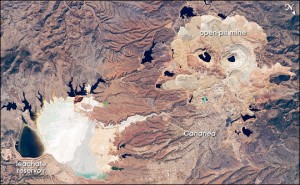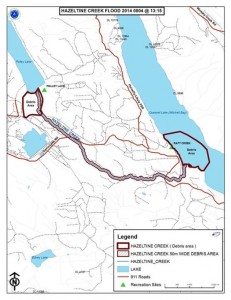 On Tuesday, the World Wildlife Federation (WWF) released the latest Living Planet report, Living Planet 2014. Published every two years, the WWF says it “gives us a picture of the changing state of global biodiversity and the pressure on the biosphere arising from human consumption of natural resources.”
On Tuesday, the World Wildlife Federation (WWF) released the latest Living Planet report, Living Planet 2014. Published every two years, the WWF says it “gives us a picture of the changing state of global biodiversity and the pressure on the biosphere arising from human consumption of natural resources.”
This year’s report points out, as so many reports have done recently, the harm we humans are doing to the planet and the creatures who live on it. The Living Planet Index (LPI) measures more than 10,000 representative populations of mammals, birds, reptiles, amphibians and fish, and it’s declined by 52 per cent since 1970.
This means that in the last 40 years (or less than two human generations), the population of vertebrate species have dropped by over half because of us. Whether it’s us hunting them for food, or polluting and/or destroying their habitats, we’ve managed to kill off over half the animal population.
Mike Barratt, director of science and policy at WWF, said; “We have lost one half of the animal population and knowing this is driven by human consumption, this is clearly a call to arms and we must act now.” He also stated that more of the Earth must be protected from development and deforestation, and that food and energy needs to be produced sustainably.
Professor Ken Norris, director of science at the Zoological Society of London (ZSL), said; “If half the animals died in London zoo next week it would be front page news. But that is happening in the great outdoors. This damage is not inevitable but a consequence of the way we choose to live.”
Another index in the report calculates humanity’s “ecological footprint”, in other words, the scale at which it is using up natural resources. As it stands, we are cutting down trees faster than they regrow, catching fish faster than the oceans and lakes can restock, pumping water from rivers and aquifers faster than rainfall can replenish them, and emitting more carbon dioxide than the forests and oceans can absorb.
The report concludes that today’s average global rate of consumption would need 1.5 planet Earths to sustain it. Four planets would be required to sustain US levels of consumption, and 2.5 Earths to match UK consumption levels.
The choice couldn’t be much clearer. We either change the way we live, or we die. We either work towards providing equal rights and opportunities for our fellow men, or we go further down the rabbit hole of income and social inequality where a very few people own everything while the rest of us fight for the scraps. We either stop destroying the earth with our wanton waste and pollution, or the earth will destroy us. And, we need to do it now.



![TransCanada Building, Calgary. Photo by Qyd (talk · contribs) (Own work (Own photo)) [GFDL (http://www.gnu.org/copyleft/fdl.html), CC-BY-SA-3.0 (http://creativecommons.org/licenses/by-sa/3.0/) or CC-BY-2.5 (http://creativecommons.org/licenses/by/2.5)], via Wikimedia Commons](http://occupyworldwrites.org/wp-content/uploads/2014/09/Trans_Canada-logo-224x300.jpg)

![Photo by Rakrist08 (Own work) [CC-BY-SA-3.0 (http://creativecommons.org/licenses/by-sa/3.0)], via Wikimedia Commons](http://occupyworldwrites.org/wp-content/uploads/2013/12/Remenabila_02-300x150.jpg)
![By wabeggs (Own work) [CC-BY-SA-3.0 (http://creativecommons.org/licenses/by-sa/3.0)], via Wikimedia Commons](http://occupyworldwrites.org/wp-content/uploads/2014/02/lossy-page1-656px-Back-Scattered_Electron_Micrograph_of_Coal_Fly_Ash_small_tif-300x274.jpg)